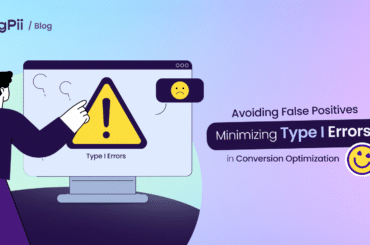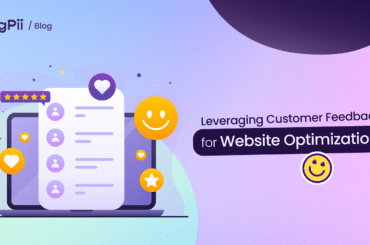Have you ever walked into a restaurant without researching how much it’d cost you first?
It’s kind of the same concept when it comes to your pricing page, it’s the first thing a prospect would look at if he’s considering you.
If it’s between you and a competitor of yours, the battleground settles on the pricing page.
And that’s why optimizing it is such an important thing.
But…
What are some things to keep in mind for pricing page optimization?
We’ll take a closer look, but first, let’s ask some questions.
Questions To Ask Before Optimizing Your Pricing Page: –
Let me think with you about how should you approach your pricing page optimization.
Your pricing vs your competitors!
When it comes to price, it’s important to make sure that you’re comparing apples to apples.
That means taking a look at what other companies are charging for similar products and services and making sure that you’re in the same ballpark.
If you’re too high or too low, you run the risk of losing sales to competitors.
It’s also important to make sure that you’re highlighting what makes your product or service different and how it offers more value for the money.
This can help you justify your prices in comparison to what others are selling while still remaining competitive.
The biggest thing to remember when it comes to pricing page optimization is that you should go for a balance between “competitive” and “expensive”.
If your product or service is too expensive, people may be turned off.
Conversely, if it’s not competitive enough, then people might have trouble rationalizing buying from you instead of from a competitor.
Before you settle on the final price of your product or service, do some research into what others are charging so that you can avoid making costly mistakes down the road. When done right, optimizing your pricing page can make all the difference in terms of conversions!
Free Trial, Or What?
One of the best ways to increase the chances that someone will buy from you is to offer a trial period.
This gives them the opportunity to try out your product or service before they commit to anything, and it can help you to determine whether or not someone is actually interested in what you’re selling.
If they are, then there’s a good chance that they’ll convert into a paying customer.
Another great thing about trials is that they can help to weed out people who are only mildly interested in what you have to offer and aren’t likely to become loyal customers in the long run.
This leaves more room for those who are really interested in what you have to offer and are likely to stick around for the long haul.
Of course, it’s important to make sure that you’re offering trials that are beneficial for both parties involved.
For example, if your trial is only free for a set amount of time (like 30 days), then people can’t really afford to “test drive” your product or service before deciding whether or not they actually want to purchase from you.
On the other hand, if you have an open-ended trial period where there are no restrictions on how much someone can use your product or service, then it defeats the purpose since they won’t be able to fully try out what it has to offer before being asked to pay up.
The best way would be creating a short-term trial version which will allow people to try and convince themselves and others that they need your product or service and will do it as long as it is free.
Should my pricing page have FAQs?
To optimize your pricing page visitor experience, remember to include frequently asked questions (FAQs) to help make the buying process easier.
People like knowing what they’re getting into, and if you can provide them with all of this information right away, then chances are that they’ll appreciate your time and attention enough to convert into paying customers.
Does the pricing list include all features and benefits?
When creating your pricing page, it’s important to remember to list all of the features and benefits that are included in your product or service.
This helps to ensure that there are no surprises when someone decides to buy from you, and it also gives them a good idea of what they’re getting for their money.
It’s also a good idea to list the prices for each individual feature or benefit so that people can compare and contrast what you’re offering with what others are selling.
This can help them to make an informed decision about whether or not they want to buy from you.
Remember, people appreciate transparency, so make sure that your pricing page is upfront about everything that’s included!
Okay, now let’s jump into some optimizations!
Pricing Page Optimization
1. Your Pricing Page Should Match The Message You’re Sending With Your Website
Many people make the mistake of having different messaging on their pricing page than what their website conveys overall, which can negatively impact how customers perceive them and affect whether or not they decide to buy from you.
For example, if your marketing materials promote an ultra-modern brand image but your pricing page has an outdated design customers could potentially get turned off and not make a purchase.
It’s important to align the design and messaging on your website and pricing page for the best results.
For example, if you’re trying to convey innovation around your product or service, having an outdated design could send off the wrong message to prospects.
2. Keep It Concise On Your Pricing Page
Many companies use their pricing pages as a place to tell customers about all of the features that they get access to when purchasing from them; however, this can be overwhelming and confusing for potential buyers who might not know what any of it means.
Include only the most key benefits in your copy so that you can keep things concise while still conveying what your product actually does.
3. Use Comparisons To Make Your Pricing Page More Appealing
You should never have to shy away from doing comparisons on your pricing page. Comparisons can be a great way to show customers that your product is the best value while also helping you stand out in comparison with competitors.
However, it’s important to not go overboard while still making sure that you’re being upfront about any unique features or benefits of whatever it is that you are comparing yours to.
For example, if you are selling widgets and compare them to another company’s widgets but they have bells and whistles your’s doesn’t be clear about what those bells and whistles are so readers can determine for themselves if they’re worth the extra money or not.
4. Use Bullet-Pointed List To Convey The Benefits And Features Of Your Product/Service
People tend to scan online and quickly move on to the next thing if they feel like it’s going to be too long and drawn out for them, so making things as easy as possible is key.
This means that you should use bullet-pointed lists on your pricing page instead of paragraphs because this breaks down what you offer into more easily digestible chunks. For example:
· Offers all-inclusive pricing (no nickel and diming)
· Provides unlimited support at no additional charge
This can help customers quickly realize that buying from you will save them time and money compared to other options while also providing a ton of value that their money will go towards.
5. Create A Free Trial Account Option
Who doesn’t want free stuff?
Including the option to trial an account with your product or service gives people the opportunity to try before they buy which can increase their interest level in actually purchasing from you.
People love getting things at no cost, so make it easy for them!
If you want also you can do it as Ahrefs did it, $1 for a week of trial.
That way you prevent abuse of your platform/
6. Don’t Forget To Make Frequently Asked Questions Available On Your Pricing Page
One of the best ways to answer questions that people have without doing so directly is to include them on your pricing page as frequently asked questions.
This can help you to better prepare for what people might be thinking or wondering, and it also means that they won’t have to wait until after they’ve submitted their contact information before getting all of their answers.



